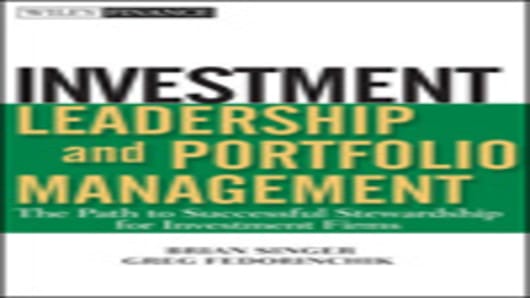Little did I know that the time from when I left UBS until I launched Singer Partners in 2009 would provide so many living examples of the concepts addressed in our book, Investment Leadership and Portfolio Management: The Path to Successful Stewardship for Investment Firms. Moreover, the process of launching Singer Partners has revealed in stark detail the adverse incentives leading to common investment actions not in clients’ interests. Our book explores the incentives at great length, but I would like to delineate a few particularly striking ones today.
With many alternative investments, clients get a vastly superior performance than the one they think they’re paying for. Intending to pay for just short-term performance, clients actually disincentivize sustainable performance. Consider the incentives of the typical alternative vehicle fee structure, which includes a 2% management fee and a 20% performance fee assessed annually.
First, imagine the aggregate performance of investors in the market, assuming no fees. The market encompasses all investors and, in aggregate, they achieve market returns. A portion of the market invests passively, and the remainder invests actively. Passive investors receive the market return, so it must be the case that active investors achieve the market return, too. The active investors can then be segmented into traditional and alternative. Traditional investors tend to be index-huggers and severely constrained, which suggests that their performance will be close to that of a passive investor. Some would argue that all skill has exited the traditional arena and that the alternative community can simply milk the traditional space for ongoing performance. It is also possible to argue that some hedge funds took advantage of so-called "dumb money" when the hedge fund industry was small. However, it is hard to contend that there was ever enough "dumb money" for a $2 trillion industry to systematically outperform the market.
So if a new alternative fund is established and the expected ability to generate performance is zero, then what should the new fund manager do? The newly minted, highly skilled alternative investor knows that she must generate 2% over T-Bills each year, with few if any down months and with a relatively low market correlation. Moreover, most alternative investment buyers avoid investments in funds without a three-year track record. Even a Warren Buffett would occasionally experience poor short-term performance and fail to live up to this standard. It would be inadvisable for any new alternative fund manager to subject her career, her wealth and her employees to the random variation likely to dominate short-term performance.
However, there is an easy, if unethical, solution: sell tail risk, i.e. sell catastrophe insurance. Selling catastrophe insurance is almost always extremely profitable. The seller collects insurance premiums on a very consistent basis month-in and month-out, year-in and year-out. Everything progresses quite nicely until a catastrophe occurs.
While selling catastrophe insurance is obviously a strategy exposed to tail risk, there exists a plethora of less obvious investment alternatives often identified by specific alternative investment categories. Credit spread strategies, carry trade investments, credit default swaps, straightforward option strategies and many high-risk exposures are all forms of selling tail risk. The alternatives are rife, if not always obvious.
Recent market developments suggest that the need for an advantage strong enough to surpass the 2% management fee is so strong that many investors are willing to test the barriers of acceptable ethics and even of the law. These breaches of trust have ranged from mutual-fund rapid trading and Ponzi schemes to the recent allegations of insider trading against Galleon Group, SAC Capital and others. These firms pushed their employees hard to generate positive performance with an eat-what-you-kill mindset -- on steroids. Alternative fund clients seemed happy to be complicit in this game, as long as they remained arm’s length from the untoward muck.
Moreover, the adverse incentives don’t stop with the overwhelming need to generate performance on a monthly or quarterly basis. The ruse of high-water markets would be laughable, if it weren’t so successfully seductive. This scenario can’t be any more straightforward; a fund manager’s performance collapses and the high-water market precludes compensation, so the manager walks away from the fund only to launch a new one.
Across the spectrum, the incentive structures embedded in alternative investment compensation schemes are inevitably manager wins and client loses. The flexibility of alternative investment structures is fantastic, but the real innovation of many of these vehicles is marketing.
It is clear that the overwhelming majority of alternative investment managers believe that they are skilled – in Lake Woebegone, all the kids are above average – and intend to produce superior investment returns for their clients. However, the incentives are plentiful and strong, leading to unconscious and sometimes insidious behaviors. While the incentives need to be corrected, the only line between right and wrong is not the law; it is integrity and ethics. Integrity and ethics arise from leadership and an unbending culture of superior client outcomes over time. Our desire to identify and promote leadership that results in these excellent outcomes and an industry of high integrity motivated Greg and me to write Investment Leadership and Portfolio Management and is what inspired me to launch Singer Partners.
______________________




